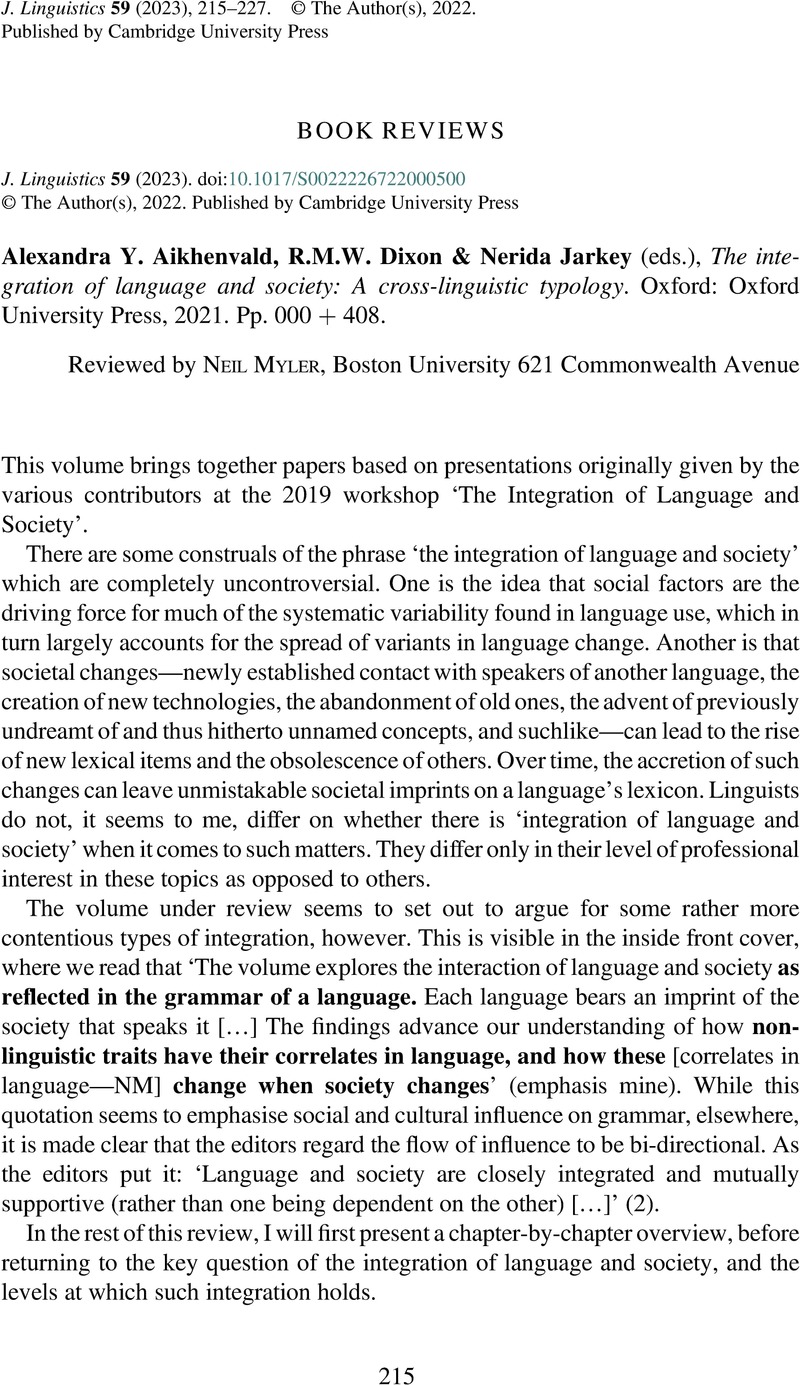No CrossRef data available.
Article contents
Alexandra Y. Aikhenvald, R.M.W. Dixon & Nerida Jarkey (eds.), The integration of language and society: A cross-linguistic typology. Oxford: Oxford University Press, 2021. Pp. 000 + 408.
Review products
Alexandra Y. Aikhenvald, R.M.W. Dixon & Nerida Jarkey (eds.), The integration of language and society: A cross-linguistic typology. Oxford: Oxford University Press, 2021. Pp. 000 + 408.
Published online by Cambridge University Press: 23 December 2022
Abstract
An abstract is not available for this content so a preview has been provided. Please use the Get access link above for information on how to access this content.

- Type
- Book Review
- Information
- Copyright
- © The Author(s), 2022. Published by Cambridge University Press



